Rules Terms
Words that have specific rules-related meanings
Action: A resource which allows you to play a chip. Actions are represented graphically by arrow icons.
Action Chip: Any chip with a banner of any color. This means every chip aside from Gems and Wounds.
Action Phase: the second phase of your turn, in which you may play chips. You start your Action Phase with one action, but can gain more from many chips. If you end your action phase with 10 or more gems in your pile, you lose. (exception: FFA sudden death tiebreaker)
Ante: The act of adding a gem into a gem pile. If your physical set runs out of gems to ante, use proxies for anted gems.
Ante Phase: The first phase of your turn, in which you must ante a gem into your gem pile. Usually this is a 1-gem, but certain chips and Panic Time can mean you ante larger gems.
Bag: In the physical game, an actual bag which contains your chips. In the online game, a zone where your undrawn chips are stored in unsorted order. If you are using a physical Print and Play set, this is the stack of cards from which you draw.
Bank: The set of chips from which you may buy. The bank will always contain 1-gems, 2-gems, 3-gems, 4-gems, Crash Gems, Combines, Double-Crash Gems, and Wounds. In addition the bank will contain 10 stacks of Puzzle Chips, but which Puzzle Chips are included may vary in each game.
Bank Stack: (or just Stack) Any individual stack of Chips within the Bank. Each Bank has 18 stacks in it.
Banner / Banner Color: The color of the area where the chip name is written. Banner Color determines what type of arrow is needed to play the chip. Chips can have Brown, Red, Blue, Purple, Grey, Gold, or multicolored banners.
Blue / Blue Banner / Blue Banner Chip: A chip with a banner that is blue, or multicolored with blue as one of the colors. Currently, all Blue Banner chips aside from Valerie’s Chromatic Orb are also  chips
chips
Brown / Brown Banner / Brown Banner Chip: A chip with a banner that is brown, or multicolored with brown as one of the colors
Buy: The act of spending your Gem Power (in game money) to gain a new chip.
Buy Phase: The third phase of your turn, in which you buy one or more chips. You must buy at least one chip during the Buy Phase - if you have less than 1 Gem Power, then you must buy a wound (exception: no wounds left in the bank). You cannot buy more than one wound per turn, but otherwise you can buy as many chips as you can afford.
Character Chip: Any of the three chips unique to each character. Character chips cannot be bought in the game and cannot be trashed (exception: Deathstrike Dragon).
Chip: Any of the little round things with words and pictures on them that make up this game. They are played analogously to cards - and if you are using a Print and Play version, you are playing with cards - but the text refers to them as chips.
Cleanup Phase: The fourth and final phase or your turn, in which you discard all the chips you played (exception: ongoing chips), may use Pigs and then discard the remaining chips from your hand and finally draw a new hand according to your Height Bonus
Color: (short for Banner Color) The color of the area where the chip name is written. Banner Color determines what type of arrow is needed to play the chip. Chips can have Brown, Red, Blue, Purple, Grey, Gold, or multicolored banners.
combine: The act of merging gems in your gempile into a single gem of higher value. With a lowercase “c” this means any such effect. If your physical set does not have any gem of the combined values left in the bank, use a proxy.
Combine: with a capital “C”, this specifically means the Combine chip, which is the most common effect which lets you combine.
Cost: How much Gem Power (money) you need to Buy a chip from the bank. The Cost of each bank chip appears in a white text within a black background above the Banner on the chip. (exception: Sale Prices modifies the cost of chips during play)
Crash: The act of breaking gems in your gem pile and sending them at an opponent.
Crash Gem (also sometimes just Crash): The Crash chip, which is the most common effect that lets you crash gems at an opponent. You only get the +:ps_:from a Crash when you actually send gems and you can only spend the +:ps_: on your own turn.
Counter-Crash: A Crash played as a reaction to sent gems.
Counter-Counter-Crash: A crash played as a reaction to sent gems which were themselves sent by a Counter-Crash.
Custom Clockwork: An alternate game mode in which players do not start with set characters but instead draft character chips from a random set
Danger Time: A game state triggered when one more Bank Stacks than those required for Panic Time first become empty. During Danger Time, ante is increased and each player antes a 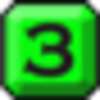 during their ante phase.
during their ante phase.
Deadly Time: A game state triggered when one more Bank Stacks than those required for Danger Time first become empty. During Deadly Time, ante is increased and each player antes a 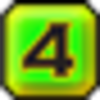 during their ante phase.
during their ante phase.
Deck: The total set of all chips player has in the game. Used to mean the total of all chips from a player’s Bag, Hand, Discard Pile, Ongoing as well as any currently being played.
Discard: The act of moving a chip from Hand or in play into the Discard Pile.
Discard Pile: (also sometimes just “Discard”) The zone where previously played and discarded chips stay until Recycled back into the bag. Which chips are in Discard Piles is explicitly public infomation.
Do as Much as You Can Rule: A rule of Puzzle Strike that states that if a chip has multiple effects any of which are currently impossible the effects which are possible still happen.
Free For All (FFA): A game mode with 3 or 4 players in which each player is playing for an individual victory.
Gain: The act of acquiring a new chip. Gained chips are placed in your discard when gained and will not be drawn until you recycle.
Gem: Icon: 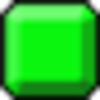 A
A  ,
, 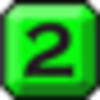 ,
,  , or
, or  . Although the same gem chips are used for both gems in your deck and gems in your Gem Pile it is important to keep the two uses distinct.
. Although the same gem chips are used for both gems in your deck and gems in your Gem Pile it is important to keep the two uses distinct.
Gem Pile: The zone where a player’s gems are Anted. The total value of gems in a gem pile determines how many chips a player draws during their Cleanup Phase and whether they lose at the end of their Action Phase.
Gem Power: The name Puzzle Strike uses to refer to in-game money used to buy new chips. Represented by the $ icon, and often just called “money” by players.  s in your hand during your Buy Phase are the most common source of Gem power.
s in your hand during your Buy Phase are the most common source of Gem power.
Grey Banner / Grey Banner Chip: A chip with a banner that is colored grey. Such chips can only be played off of black arrows. Currently the only two Grey Banner Chips are Option Select and Gwen’s Shadow Plague
Gold Banner / Gold Banner Chip: A chip with a banner that is colored gold and the “!” icon. Such chips can only be played off of black arrows. Currently the only two Gold banner Chips are Master Puzzler and The Hammer.
Hand: The zone from which chips may be played. This is analogous to a hand in most card games. Chips in hand are usually held physically in the hand or stored behind a player’s screen. The number of chips in hand is public information, but which chips they are is hidden information (Exception: many 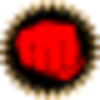 attacks specifically reveal the victim’s hand)
attacks specifically reveal the victim’s hand)
Height Bonus: The mechanic for drawing additional chips based on your Pile Height during your Cleanup Phase:
- At a Pile Height of 0-2 you draw 5 chips during Cleanup;
- At a Pile Height of 3-5 you draw 6 chips during Cleanup;
- At a Pile Height of 6-8 you draw 7 chips during Cleanup;
- At a Pile Height of 9+ you draw 8 chips during cleanup. (Note at more than 9: you lose the game before drawing aside from sudden death tiebreaker in FFA mode),
Icons: the various pictographic representations of game mechanical and rules concepts:
action arrows:
these icons indicate actions you can use to play various Action Chips
 An action which you can use to play a chip of any banner color (even Grey and Gold)
An action which you can use to play a chip of any banner color (even Grey and Gold)
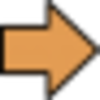 An action which you can use to play a Brown Banner Chip
An action which you can use to play a Brown Banner Chip
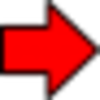 An action which you can use to play a Red Banner Chip
An action which you can use to play a Red Banner Chip
 An action which you can use to play the Main action of a Blue Banner Chip
An action which you can use to play the Main action of a Blue Banner Chip
 An action which you can use to play the Main action of Purple Banner Chip
An action which you can use to play the Main action of Purple Banner Chip
reaction symbols:
these icons on a chip mean the chip can be played as a Reaction
 A symbol that means that the chip can be played as a Reaction against
A symbol that means that the chip can be played as a Reaction against  attacks
attacks
 A symbol that means that the chip can be played as a Reaction against sent gems. Note that
A symbol that means that the chip can be played as a Reaction against sent gems. Note that  reactions cannot be played against gem sends from
reactions cannot be played against gem sends from 
![]() A symbol that means the chip can be played as a reaction when it says it can. Currently this symbol appears solely on Midori’s Rigorous Training.
A symbol that means the chip can be played as a reaction when it says it can. Currently this symbol appears solely on Midori’s Rigorous Training.
type-designation symbols:
these icons merely refer to various subsets of chips, they appear on each of the chips within that subset and are used in the text of rules and other chips to refer to any such chip.
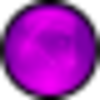 Any of: Crash, Combine, Double Crash or Zane’s Crash Potato. Other chips which can crash gems are not :psorb:s (although Grave’s Reversal and Jaina’s Unstable Power as played “as if they were”)
Any of: Crash, Combine, Double Crash or Zane’s Crash Potato. Other chips which can crash gems are not :psorb:s (although Grave’s Reversal and Jaina’s Unstable Power as played “as if they were”)
 Any gem. Either a: 1-gem, 2-gem, 3-gem, or 4-gem.
Any gem. Either a: 1-gem, 2-gem, 3-gem, or 4-gem.
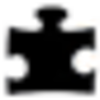 Any puzzle chip. The Bank in each game will start with 10 Stacks of Puzzle Chips in it, and there are currently 51 different Puzzle Chips (24 in the base set, 24 in Shadows, and the 3 “Promo Chips”)
Any puzzle chip. The Bank in each game will start with 10 Stacks of Puzzle Chips in it, and there are currently 51 different Puzzle Chips (24 in the base set, 24 in Shadows, and the 3 “Promo Chips”)
“!”: Any Gold Banner Chip with a “!” in the banner. Currently the only two such chips are Master Puzzler and The Hammer. (note the chip “Ouch!” is not an “!” chip, since the symbol does not appear in its banner)
 Any attack chip. All such chips are Red Banner, and any
Any attack chip. All such chips are Red Banner, and any  chip which affects an opponent gives that opponent the chance to play a
chip which affects an opponent gives that opponent the chance to play a  Reaction in response.
Reaction in response.
other symbols
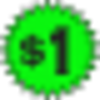 ,
,  or
or  Additional Gem Power (“money”) for the current turn, which you may spend during the Buy Phase. Note: if it is someone else’s turn when you play a chip which gives you +:ps_: you do not have a Buy Phase on their turn and therefore lose the extra money before you have a chance to spend it. (exception: Gems to Gemonade explicitly grants the +:ps_: on a following turn’s buy phase)
Additional Gem Power (“money”) for the current turn, which you may spend during the Buy Phase. Note: if it is someone else’s turn when you play a chip which gives you +:ps_: you do not have a Buy Phase on their turn and therefore lose the extra money before you have a chance to spend it. (exception: Gems to Gemonade explicitly grants the +:ps_: on a following turn’s buy phase)
 Negative Gem Power (“money”) which reduces the amount you may spend during the current turn’s Buy Phase by 1. Note: if it is someone else’s turn when you play a chip which gives you
Negative Gem Power (“money”) which reduces the amount you may spend during the current turn’s Buy Phase by 1. Note: if it is someone else’s turn when you play a chip which gives you  you do not have a Buy Phase on their turn and therefore lose the negative money before it reduces your buy.
you do not have a Buy Phase on their turn and therefore lose the negative money before it reduces your buy.
+:pschip: Draw a chip from your bag. if you have no chips remaining in your bag, Recycle your Discard Pile into your Bag and then draw a chip. If you have no chips remaining in either you Bag or your Discard Pile, you follow the Do as Much as You Can Rule and do nothing.
 A piggybank resource - see Pig
A piggybank resource - see Pig
Main: What a chip does when played as an Action. Distinct from what the same chip may do if played as a Reaction.
Ongoing: The continuing effect certain chips have while they remain in play.
On Top of Your Bag: Equivalent to placing a card on top of your deck in a card game. Chips placed on top of your bag are those which will be drawn first. With the physical set this is represented by physically placing such chips atop your Bag and drawing them before drawing chips from within your Bag.
Panic Time: A game state triggered when a number of Bank Stacks equal to the number of players first become empty. During Panic Time, ante is increased and each player antes a  during their ante phase.
during their ante phase.
Pig or Piggy Bank: Icon  A piggybank resource which you can use to hold on to a chip from your current hand for your next hand. Each chip you
A piggybank resource which you can use to hold on to a chip from your current hand for your next hand. Each chip you  replaces a chip you would draw from your bag during your Cleanup Phase, so your next hand is the same size regardless of whether or not you use any
replaces a chip you would draw from your bag during your Cleanup Phase, so your next hand is the same size regardless of whether or not you use any  s (Exception: Always in Control specifically gives you extra draws for each of its
s (Exception: Always in Control specifically gives you extra draws for each of its  s you use) The use of
s you use) The use of  s is always optional and you cannot
s is always optional and you cannot  action chips you have played nor gems you spent during your turn.
action chips you have played nor gems you spent during your turn.
Pile: (Short for Gem Pile) The zone where a player’s gems are Anted. The total combined sizes of gems in a gem pile determines how many chips a player draws during their Cleanup Phase and whether they lose at the end of their Action Phase.
Pile Height: The total value of all the gems in a players pile. Determine Pile Height by summing the sizes of the gems together. A character with a  , a
, a  and a
and a  in their pile has a Pile Height of 7.
in their pile has a Pile Height of 7.
Purple / Purple Banner / Purple Banner Chip: A chip with banner that is purple, or multicolored with purple as one of the colors.
Puzzle Chip: Any chip with its cost printed inside a  Icon. Puzzle Chips are distinct from Character Chips,
Icon. Puzzle Chips are distinct from Character Chips,  s,
s,  s and wounds. The Bank in each game starts with 10 stacks of Puzzle Chips in it,
s and wounds. The Bank in each game starts with 10 stacks of Puzzle Chips in it,
Reaction An effect on a chip which may be played without requiring an Action (arrow) when an opponent meets a trigger condition.  reactions may be played in response to
reactions may be played in response to  attacks which affect you.
attacks which affect you.  reactions may be played in response to an oppenent sending gems. Midori’s Rigorous Training is unique in that it is a brown-shield reaction which can triggered by an opponent’s buy.
reactions may be played in response to an oppenent sending gems. Midori’s Rigorous Training is unique in that it is a brown-shield reaction which can triggered by an opponent’s buy.
Recycle / Reshuffle (sometimes just “Cycle”) The act of putting all the chips from your Discard Pile back into your Bag. Any time you have no chips left in your Bag but need to draw a chip, you Recycle. This is exactly equivalent to reshuffling the discard pile into the deck in a card game, and if you have the Print and Play set, that is exactly what you do.
Red / Red Banner / Red Banner Chip: A chip with a banner that is red, or multicolored with red as one of the colors. Currently, all Red Banner chips aside from Valerie’s Chromatic Orb are also  chips
chips
Reveal: Show all players your chip(s). Revealed chips from your hand are public information.
Search: To look through a zone and attempt to find a chip. You do not have to find a chip you are searching for even if it is there. If you search for and find a chip in your bag or hand, you must Reveal that chip.
Sudden Death: (Sudden Death Tiebreaker) A possible endgame state in FFA mode. This state is triggered when one or more players are eliminated but at least two of the remaining players are tied for lowest Pile Height. In this state, the tied players continue the game, and now Pile Heights are compared at the end of each and every remaining player action phase. If a player ever ends an action phase with a higher Pile Height than any remaining opponent, that player is eliminated from the game. Sudden Death continues until only one player is left. Thus within Sudden Death, you can potentially lose with a Pile Height below 10 and you can potentially survive with a Pile Height above 10.
Trash: Remove a Chip from your Deck or a Gem from your Gem Pile and return it to the bank (Exception: Deathstrike Dragon never goes to the bank)
Originally compiled by rabid_schnauzer as part of his “Puzzle Strike Academy” series
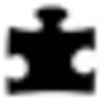 chips or being especially vulnerable against certain
chips or being especially vulnerable against certain  s) into a deck.
s) into a deck.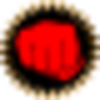 s which wound or force discarding it occasionally includes non-
s which wound or force discarding it occasionally includes non- s against a
s against a 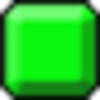 s are being added into or removed from piles. Increasing Tempo is a component of a Rushdown strategy. Decreasing Tempo is a component of a Defensive strategy.
s are being added into or removed from piles. Increasing Tempo is a component of a Rushdown strategy. Decreasing Tempo is a component of a Defensive strategy.